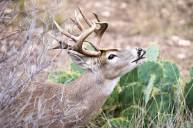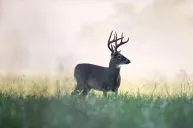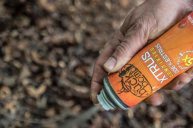The Texas Park & Wildlife Commission will implement new statewide deer carcass disposal regulations, saying they want to limit the risk of transmitting chronic wasting disease, or CWD.
According to an announcement, the commission approved the regulations during its May meeting. Blaise Korzekwa, the department's White-tailed Deer Program Leader, explained that the guidance will provide hunters with "more options when it comes to processing their deer."
"Proper disposal of all potentially infectious material is critical for reducing the risk of disease transmission," Korzekwa said. He added: "If CWD is not managed and efforts are not made to mitigate potential spread of the disease, the implications for Texas and its multibillion-dollar ranching, hunting, wildlife management and real estate economies could be significant."
New Texas deer carcass disposal regulations
According to the announcement, the new regulations will allow hunters to debone a carcass at the site of the harvest, as long as the hunter maintains proof of sex and tags.
"By leaving the unused parts at the site of harvest, the chance of spreading CWD to other parts of the state is greatly reduced," the agency said.
Additionally, meat from each deboned carcass must remain in whole muscle groups and maintained in a separate bag or container until reaching its final destination.
The department explained that the new disposal measures apply to unused carcass parts from native deer native to Texas. These include white-tailed deer or mule deer. And only if deer transported from the site of harvest. If not, the new rules would not apply.
Acceptable disposal options for Texas deer
For hunters who process their deer at home, the department said refers it prefers disposal in a commercial trash service. But other options include:
- Disposing of remains either directly or indirectly into a state-permitted landfill.
- Burying the carcass no less than three feet below the natural surface or earthen material.
- Or, return the carcass to the property where the animal was harvested.
According to reports, Texas has recorded 624 CWD cases in deer between the first case in 2012 and January 2024. That figure includes 181 cases in 2023. However, experts say the figure is still low when compared to other states.




